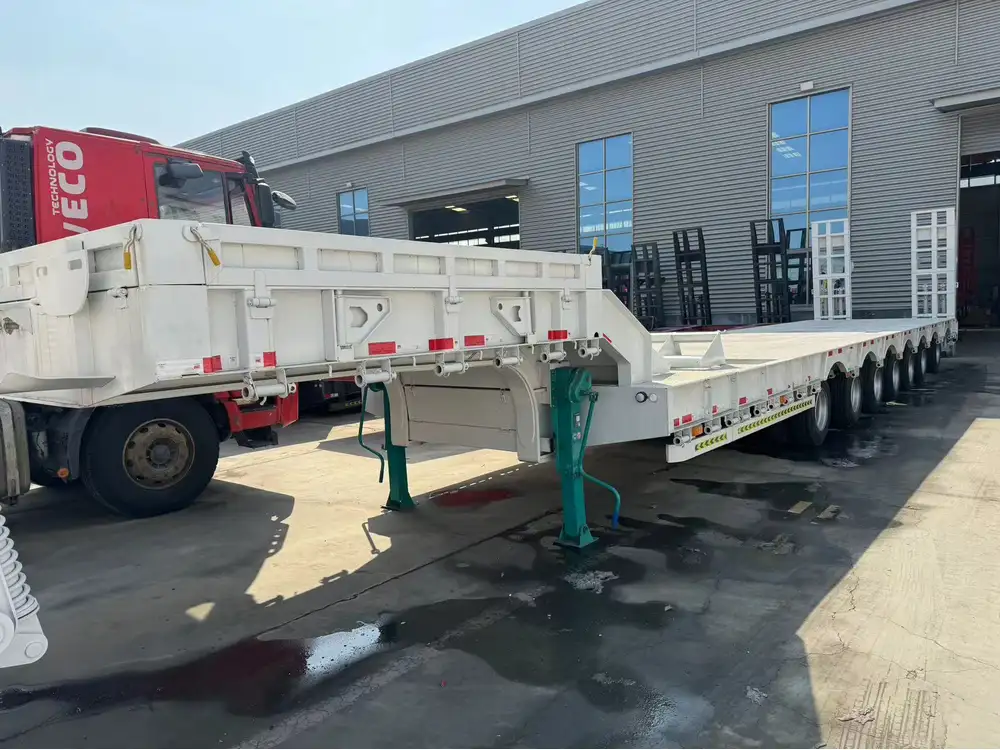Understanding Trailer Holding Tanks: A Comprehensive Overview
Trailer holding tanks serve a critical function in the management of waste and water in RVs and trailers. These tanks collect gray and black water, which arise from showering, washing dishes, and using the restroom. As such, the safety of water sourced from holding tanks for drinking purposes is a pressing concern among users. This article will explore the various aspects of trailer holding tanks, including their function, maintenance, and the implications regarding the safety of consuming any water derived from these systems.
What Is a Holding Tank?
Holding tanks in trailers come in two primary forms:
- Gray Water Tanks: Collect wastewater from sinks and showers.
- Black Water Tanks: Collect waste from toilets.
These tanks are designed to temporarily store waste until it can be safely disposed of at designated dump stations. Thus, the water contained in these systems is not intended for consumption, and several factors contribute to its unsuitability for drinking.

The Composition of Holding Tank Water
Common Constituents of Holding Tank Water
The water in holding tanks can contain an array of materials and substances, primarily due to its source:
- Organic Waste: This includes food scraps, hair, and other biodegradable materials.
- Chemical Additives: To break down waste, many RV owners use chemical treatments. These chemicals can include:
- Formaldehyde
- Benzalkonium chloride
- Other harsh solvents
- Pathogens: The accumulation of bacteria, viruses, and other microorganisms can occur, especially in black water tanks, which become a breeding ground for unsanitary conditions.
| Composition Element | Impact on Potability |
|---|---|
| Organic Waste | Potential for toxicity and illness |
| Chemical Additives | Harsh and harmful to humans |
| Pathogens | High risk of disease transmission |
Health Risks Associated with Drinking Holding Tank Water

The Dangers of Contaminated Water
Drinking water sourced from trailer holding tanks poses multiple health risks, primarily due to the contamination aforementioned. Several diseases, including gastrointestinal infections, hepatitis A, and other severe illnesses can arise from the consumption of contaminated water.
Bacterial Infections: Pathogens present in wastewater can lead to bacterial infections which may cause symptoms like diarrhea, vomiting, and abdominal cramping. Common bacteria found in contaminated water include:
- E. coli
- Salmonella
- Campylobacter
Viral Infections: Viruses such as norovirus and hepatitis A can linger in holding tank water, posing grave health risks.
Chemical Risks: The chemical additives designed for waste breakdown, while effective for sanitation within the tank, are toxic to human health. Ingesting these substances may lead to acute poisoning or long-term health issues.
Key Takeaways
- Holding tank water is not intended for consumption.
- Drinking from these tanks can lead to severe health risks and complications.
Best Practices for Trailer Water Management

Ensuring Safe Water for Consumption
To maintain a safe living environment while engaging in RV travel, it is essential to follow a few best practices concerning trailer water management:
Use Designated Fresh Water Tanks: Always utilize the designated fresh water tank for drinking and cooking purposes. This tank should be separate from any wastewater systems.
Regular Maintenance and Checks:
- Conduct regular inspections and cleanings of your holding tanks to avoid buildup of waste and potential contamination.
- Properly empty gray and black water tanks at designated dump stations.
Chemical Management: Opt for eco-friendly and biodegradable treatments for waste to minimize chemical contamination.
A Step-By-Step Guide to Safe Water Practices
| Step | Action |
|---|---|
| 1. Segregate Tanks | Ensure fresh water and waste tanks are distinctly separated. |
| 2. Regular Cleaning | Clean fresh water tanks with appropriate cleaning agents. |
| 3. Inspect Before Use | Inspect tanks for leaks or contamination issues periodically. |
| 4. Fill with Safe Water | Use potable water sources for refilling fresh water tanks. |
| 5. Avoid Cross Contamination | Ensure hoses and fittings used for filling fresh water are clean and not contaminated. |
Common Myths About Trailer Holding Tanks

Debunking Misconceptions
There are numerous misconceptions surrounding the water sourced from trailer holding tanks. Understanding these myths can help in making informed decisions.
Myth: “All tank water is safe after filtering.”
- Reality: While filtration can reduce impurities, it cannot eliminate pathogens or chemical contaminants entirely.
Myth: “Holding tank water can be treated for drinking purposes.”
- Reality: The presence of harmful contaminants renders holding tank water inherently unsafe for consumption, regardless of treatment methods.
Myth: “Only black water is dangerous.”
- Reality: Gray water can also be contaminated with bacteria and pathogens, making it unsafe for drinking purposes.
Conclusion: Why Trailer Holding Tank Water Should Never Be Drunk
While it may be tempting to consider salvaging water from trailer holding tanks in emergency situations or for convenience, the risks far outweigh any potential benefits. The composition of holding tank water, with its harmful pathogens and toxic chemicals, categorically renders it unsafe for consumption.
Travelers can ensure their safety and well-being by adhering strictly to the outlined best practices and providing adequate maintenance for their trailers’ water systems. Ultimately, keeping fresh water sources separate from waste holding tanks is the cornerstone of safe RV living and travel.
Final Recommendations
- Prioritize Freshwater Sources: Always source your drinking water from clean, potable supplies.
- Educate Yourself and Others: Spread awareness about the importance of safe water practices.
- Regular Maintenance: Actively manage and maintain your water systems to prevent potential health hazards.
By taking these precautions, RV enthusiasts can enjoy their travels with peace of mind, knowing they are safeguarding their health and that of their companions.



